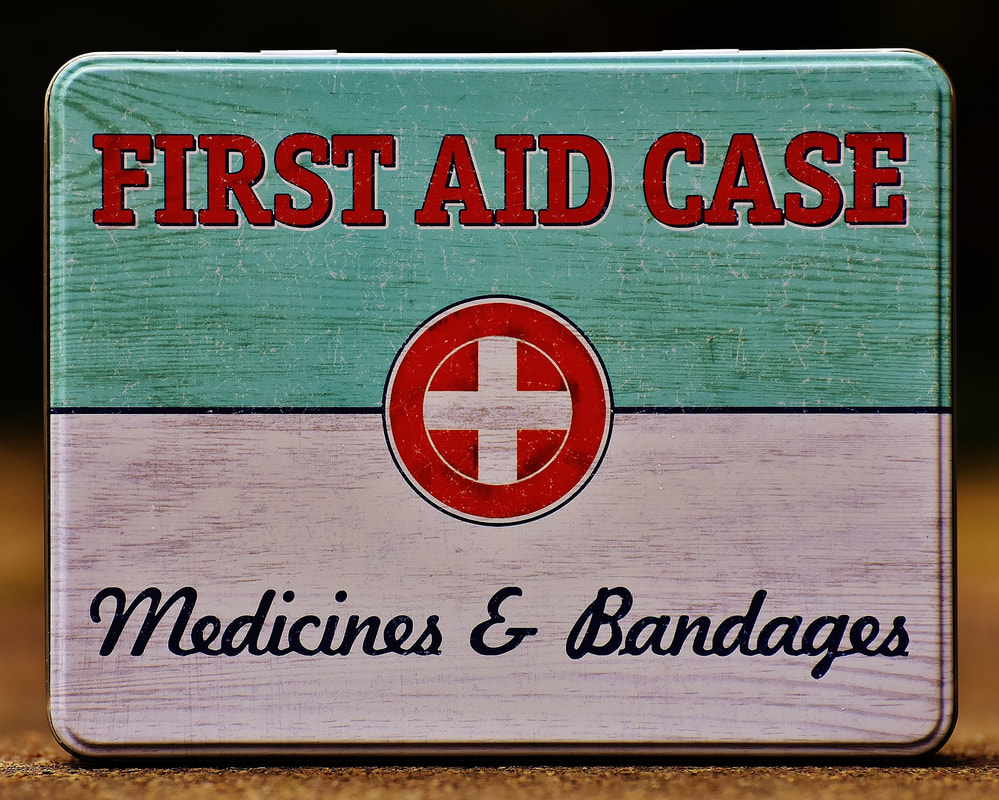 Image by Alexas_Fotos from Pixabay Image by Alexas_Fotos from Pixabay Things you can do to help yourself until your physician can see you When tissue is damaged by being crushed, stretched, or torn, an inflammatory response occurs. Hemorrhage and swelling occur, along with the direct effect of the inflammatory products on nerve endings, produce pain and spasm. The spasm not only splints the damaged tissue, but also compresses pain fibers. Moreover, it lessens the efficiency of the vascular system and can result in ischemia (lack of blood supply) at the injured area. The pain fiber compression and ischemia establish a vicious pain spasm cycle. As a result, more cells are eventually injured than were initial. A hematoma forms when blood vessels are torn. Plasma also leaks into the damaged area to produce edema (swelling). Swelling is the greatest enemy of healing. The goal of early treatment is to delay or minimize swelling. By limiting the swelling, pain and muscle spasm decrease and the magnitude of the injury is reduced. Early motion is also important; otherwise, if the injured person avoids using the part, his/her muscles will atrophy in a few days. The joint or damaged tissue will then be less stable and will most likely be easy to injure again. ICE: The appropriate first-aid treatment for soft-tissue injuries is the application of ice. Ice, by delaying or minimizing swelling, decreases pain and muscle spasm and limits the magnitude of an injury. The lower tissue temperature induces local vein constriction, which lessens capillary permeability, making the blood more viscous or thick. Less blood flows into the injured area, and the hematoma (or local swelling) is less. The ice dulls peripheral pain by interfering locally with nerve impulses and decreasing the nerve’s ability to transfer signals. It relieves spasms by decreasing muscle activity, muscle spindle firing, and restricts certain chemicals which inhibit blood flow. Ice limits the magnitude of an injury by lowering metabolism in peripheral, uninjured cells. By decreasing the cellular demand for oxygen, cells are put in partial hibernation, and thus extension of the injury is avoided. Otherwise cells that have survived the initial trauma may not be able to withstand the lack of oxygen imposed by the disruption of local circulation. Initial treatment of an injury follows the acronym ICE, meaning Ice, Compression, and Elevation. The steps to be taken are as follows:
Heat: Over the years, heat in various forms has been the standard therapeutic treatment. Cold is now being applied more frequently, not only for the initial treatment of the acute injury, but also for the recovery phase. Heat is used now only in rehabilitation, whereas ice may be used to treat acute injuries and in rehabilitation. Some people are averse and sensitive to cold. The choice of heat for rehabilitation, then may be based on the injured person’s comfort. Both ice and heat are analgesic and reduce muscle spasm, but in most cases heat produces more comfort as a result of its sedating properties. Heat induces vein dilation and increases blood flow, resulting in an influx of oxygen and nutrients to the injured area and waste products being carried away. Regardless of whether heat or cold is used, however it still takes time for an injury to heal. After acute symptoms have subsided, the recovery rate with heat or cold is about the same. Waterproof heating pads are especially good for home first-aid. A moist towel should be placed between the pad and the skin to provide moist heat. The objectives of rehabilitation are to regain range of motion, strength, flexibility, muscular endurance, power, cardiovascular endurance, speed, balance agility and skills. The rehab process comprises many steps and each one must be successfully completed pain-free. In all cases of severe injury, consult your physician for a professional examination immediately!
0 Comments
Your comment will be posted after it is approved.
Leave a Reply. |
Sheila’s BlogI focus on the topics you care about most. Categories
All
Archives
February 2022
|
|
55 S. Raymond Ave. Suite 100
Alhambra, CA 91801 Main Phone: (626) 576-0591 Alternate Phone: (626) 538-3966 Fax: (626) 576-5890 Email: [email protected] |
© 2015 Yonemoto Physical Therapy. ALL RIGHTS RESERVED.
|


 RSS Feed
RSS Feed